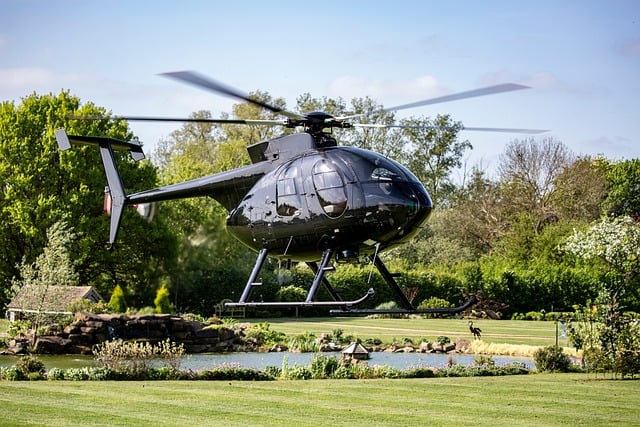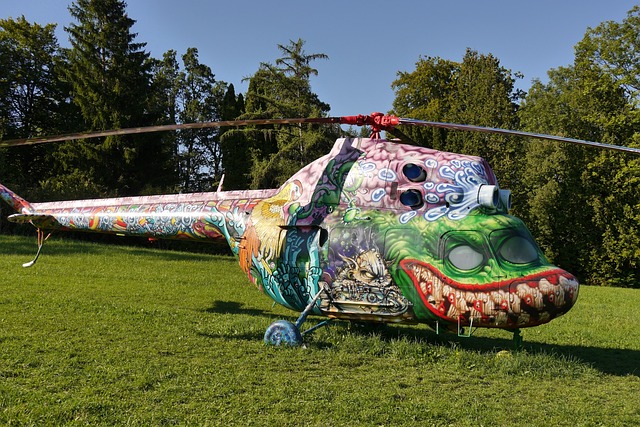Helicopter Rides in Dubai offer a unique perspective on the city's iconic desert skyscrapers, showcasing its commitment to innovative and sustainable urban development. These towering structures blend futurism with natural beauty, attracting architects and adventurers worldwide. However, rapid urbanization brings challenges, highlighting the importance of balancing growth with ecological preservation for the well-being of local communities. Dubai's future lies in embracing sustainability, integrating green technologies, and promoting responsible urban planning, transforming its helicopter rides into a symbol of eco-friendly progress.
In the heart of arid landscapes, towering skyscrapers emerge—a captivating contrast against the vast desert horizon. This unique urban vision, personified by Dubai’s skyline, pushes the boundaries of architecture and engineering. With a helicopter ride over Dubai offering unparalleled views, we explore how these structures thrive in challenging environments. From innovative design to their impact on local ecosystems, this article delves into the world of desert skyscrapers, highlighting both their marvels and future sustainability prospects, including the transformative potential of Helicopter Ride Dubai.
- The Concept of Desert Skyscrapers: A Unique Urban Vision
- Dubai's Skyline: A Global Icon and Its Desert Ambitions
- Helicopter Ride Dubai: Experiencing the City from Above
- Engineering Marvels in Arid Environments: Challenges and Solutions
- The Impact on Local Communities and Ecosystems
- Future Perspectives: Sustainable Development in the Desert
The Concept of Desert Skyscrapers: A Unique Urban Vision

The concept of desert skyscrapers is a captivating vision that pushes the boundaries of urban development, especially in arid regions like Dubai. Imagine towering structures reaching for the sky in landscapes once dominated by vast sands and rocky terrain—a sight that would have been unthinkable just a few decades ago. This unique urban idea has sparked global interest, with cities striving to create iconic skylines that stand out against the stark desert backdrop.
Dubai, known for its ambitious architectural feats, has embraced this concept with open arms, offering visitors breathtaking vistas from helicopter rides above its ever-evolving skyline. These skyscrapers are not just about height; they integrate seamlessly with the surrounding environment, incorporating sustainable design principles and reflecting a commitment to innovation. The desert’s harsh conditions have inspired architects to develop innovative solutions, ensuring these structures withstand extreme temperatures and scarce water resources, making them true marvels of modern engineering.
Dubai's Skyline: A Global Icon and Its Desert Ambitions

Dubai’s skyline is a global icon, renowned for its breathtaking architecture and innovative design. With towering skyscrapers that pierce the desert horizon, it offers a unique blend of futurism and natural beauty. A helicopter ride over Dubai allows visitors to witness this spectacle from an unparalleled perspective, showcasing the city’s ambitious vision and impressive urban development.
The desert landscape provides a stunning backdrop for these modern marvels, as sleek glass structures rise above the sandy dunes. This fusion of nature and technology has made Dubai a popular destination, attracting adventurers and architecture enthusiasts alike. Imagine soaring high above, taking in the majestic sight of skyscrapers that define the city’s identity, all while experiencing the thrill of a helicopter ride in one of the world’s most remarkable urban settings—Dubai.
Helicopter Ride Dubai: Experiencing the City from Above

Dubai, a metropolis known for its architectural marvels and futuristic skyline, offers an unforgettable experience with a unique twist—a helicopter ride that takes visitors high above the city’s iconic desert skyscrapers. This bird’s-eye view of Dubai lets you appreciate the vastness and beauty of the urban landscape like never before. As you soar through the skies, witness the bustling city transform into a vibrant tapestry of glass and steel structures against the backdrop of the arid desert.
A Helicopter Ride Dubai provides an unparalleled perspective of the city’s skyline, including its towering skyscrapers and man-made islands. Visitors can catch glimpses of the world’s tallest building, Burj Khalifa, along with other remarkable architectural achievements. This once-in-a-lifetime adventure is not just a means of transportation but a journey that showcases the city’s ambition and innovation from an entirely new vantage point.
Engineering Marvels in Arid Environments: Challenges and Solutions

In arid environments like deserts, building skyscrapers presents unique engineering challenges. Extreme temperatures, limited water resources, and harsh weather conditions demand innovative solutions to ensure structural integrity and sustainability. One notable example is Dubai’s iconic skyline, where helicopter rides offer a breathtaking view of these towering marvels amidst the desert landscape.
Engineers have overcome these hurdles through advanced construction techniques, such as using sustainable materials that can withstand high temperatures and efficient cooling systems. Additionally, innovative water management strategies, including desalination plants and rainwater harvesting, ensure these skyscrapers remain vibrant oases in the arid setting. These solutions not only create impressive urban centers but also set new standards for developing infrastructure in challenging climates.
The Impact on Local Communities and Ecosystems

The construction of skyscrapers in desert landscapes, such as those visible from a helicopter ride over Dubai, presents unique challenges and consequences for local communities and ecosystems. These towering structures can alter the natural environment, impacting both wildlife habitats and traditional ways of life. For instance, the rapid urbanisation can lead to habitat fragmentation, disrupting the movements of desert-adapted species and changing the ecological balance.
Additionally, the influx of tourists attracted by iconic skyscrapers, like those experienced during a helicopter ride in Dubai, puts immense pressure on local resources. This increased demand for water, energy, and infrastructure can strain existing community services and contribute to environmental degradation if not managed sustainably. Understanding these impacts is crucial to ensuring that desert urban development coexists harmoniously with the natural world and supports the well-being of local communities.
Future Perspectives: Sustainable Development in the Desert

The future of desert cities, such as Dubai, lies in embracing sustainable development practices. With a unique geographic position and climate, these urban centres have the opportunity to lead the way in eco-friendly innovations. One potential method is leveraging renewable energy sources like solar and wind power, which can significantly reduce carbon footprints. Additionally, smart city technologies offer solutions for efficient water management, waste reduction, and improved transportation systems.
Imagine a scenario where a Helicopter Ride Dubai becomes not just a tourist attraction but a means to facilitate green initiatives. Aerial views provide unique insights into urban planning, enabling the development of sustainable skyscrapers designed with advanced insulation and energy-efficient features. By integrating nature into their built environment, desert cities can thrive while preserving their distinct landscapes, ensuring a harmonious coexistence for both residents and visitors alike.
The concept of desert skyscrapers, symbolized by Dubai’s ambitious projects, represents a captivating fusion of urban vision and engineering prowess. As we’ve explored, navigating the challenges of arid environments through innovations in sustainable development is not just possible but essential for the future. The iconic skyline of Dubai, experienced firsthand via a Helicopter Ride Dubai, showcases what can be achieved when combining cutting-edge technology with a mindful approach to local communities and ecosystems. Looking ahead, these urban marvels could become models for sustainable growth worldwide, offering a glimpse into a future where desert landscapes are transformed not just architecturally, but also ecologically.
